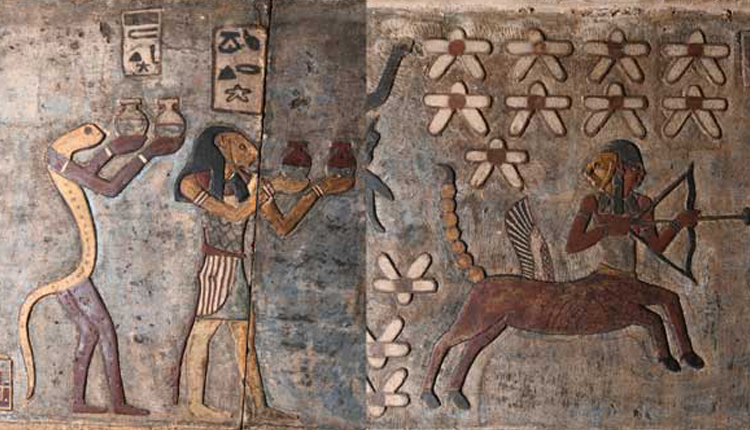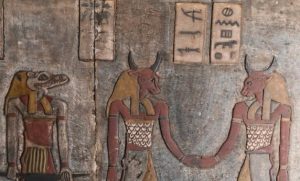An Ancient Egyptian Zodiac was uncovered for the first time in the Temple of Esna ceiling in Luxor governorate during restoration work carried out by an Egyptian-German expedition.
The zodiac signs were covered in dirt, soot, and other matter for years, and is located in the temple’s Hypostyle Hall.
The restoration works have been in progress for five years to uncover the colorful and bright astronomical representation of the ancient Egyptian night sky.
The reliefs also contain all 12 zodiac signs, the outer planets of Saturn, Jupiter, and Mars. In addition to depictions of the seven arrows and constellations used for time measurement in ancient Egyptian times.
Mostafa Waziri, the Secretary General of the Supreme Council of Antiquities, said that there are depictions of names of divine figures, deities, animals, and composite beings including a ram-headed serpent and a crocodile headed bird.
“It is the first time to see these inscriptions and reliefs in Esna Temple,” said the Undersecretary of State for Documentation in the Ministry of Antiquities of Egypt, Hisham El-Leithy.
He also said that these findings were not recorded before during the 1963 and 1975 publication of the temple’s reliefs by late French Egyptologist Serge Sauneron.
Christain Leitz, project’s director from the University of Tübingen, said that the zodiac signs were probably introduced by the Greeks during the last three centuries BC, since it is a part of the Babylonian astronomy.
The zodiac were very popular, and they were used in tombs and sarcophagi decoration, as well as an important element of horoscopes on demotic ostraca and astrological texts.
However, zodiacs are hard to find in ancient Egyptian temples. There are only two other zodiacs from Dendera, the first is in pronaos and the second is currently in the Louvre in Paris.
The Temple of Esna dates back to the Roman Period and was constructed during Emperor Claudius’ reign. The decorations in the temple were finished during Emperor Decius’ reign between 249-250 AD.



